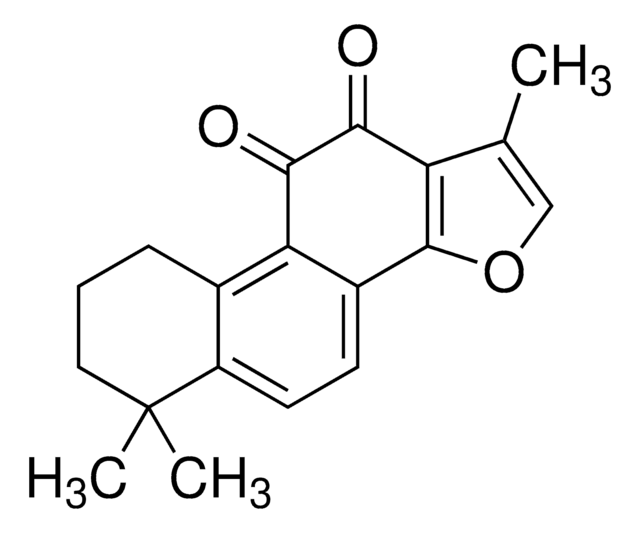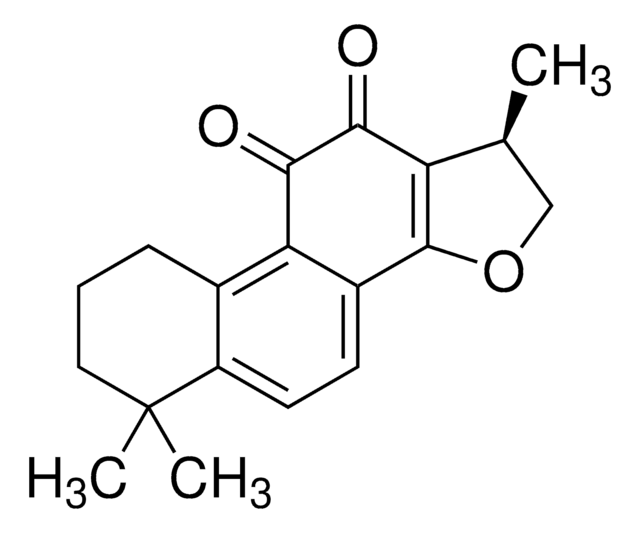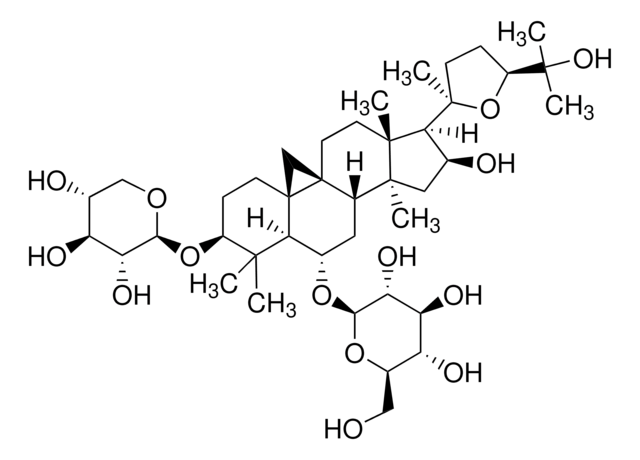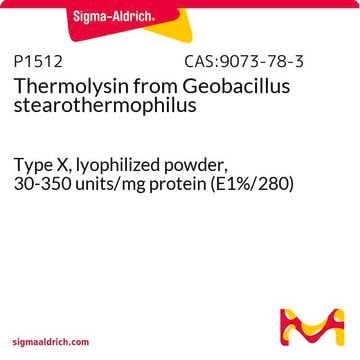C5624
Cryptotanshinone
≥98% (HPLC)
Sinónimos:
1,2,6,7,8,9-hexahydro-1,6,6-trimethyl- (R)-phenanthro(1,2-b)furan-10,11-dione, Cryptotanshinon, Tanshinone c
About This Item
Productos recomendados
Ensayo
≥98% (HPLC)
Formulario
powder
actividad óptica
[α]/D -80 to -99°, c = 0.5 in chloroform-d
condiciones de almacenamiento
desiccated
protect from light
color
orange-brown
solubilidad
DMSO: ≥5 mg/mL
aplicaciones
metabolomics
vitamins, nutraceuticals, and natural products
temp. de almacenamiento
2-8°C
cadena SMILES
C[C@H]1COC2=C1C(=O)C(=O)c3c4CCCC(C)(C)c4ccc23
InChI
1S/C19H20O3/c1-10-9-22-18-12-6-7-13-11(5-4-8-19(13,2)3)15(12)17(21)16(20)14(10)18/h6-7,10H,4-5,8-9H2,1-3H3/t10-/m0/s1
Clave InChI
GVKKJJOMQCNPGB-JTQLQIEISA-N
Categorías relacionadas
Acciones bioquímicas o fisiológicas
Código de clase de almacenamiento
13 - Non Combustible Solids
Clase de riesgo para el agua (WGK)
WGK 3
Punto de inflamabilidad (°F)
Not applicable
Punto de inflamabilidad (°C)
Not applicable
Elija entre una de las versiones más recientes:
Certificados de análisis (COA)
¿No ve la versión correcta?
Si necesita una versión concreta, puede buscar un certificado específico por el número de lote.
¿Ya tiene este producto?
Encuentre la documentación para los productos que ha comprado recientemente en la Biblioteca de documentos.
Los clientes también vieron
Nuestro equipo de científicos tiene experiencia en todas las áreas de investigación: Ciencias de la vida, Ciencia de los materiales, Síntesis química, Cromatografía, Analítica y muchas otras.
Póngase en contacto con el Servicio técnico







